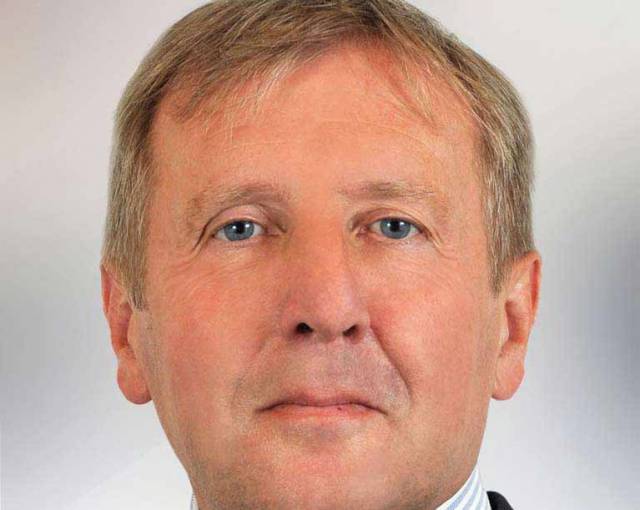As EU fisheries ministers gather in Brussels today for their annual catch and quota negotiations, one Irish industry leader has warned that the impact of Brexit is already being felt with a “doubling” of non-Irish vessels fishing in these waters writes Lorna Siggins
Irish South and West Fish Producers’ Organisation chief executive Patrick Murphy warned that while “the harsh language of a “no-deal Brexit” may have softened in the run-up to the British general election”, there could be “further twists in the weeks ahead”.
Irish vessels which catch some 34% of landings off Britain will continue to be able to fish in those waters for now.
However, full British withdrawal from the Common Fisheries Policy would result in loss of Irish access and transfer of effort by other EU vessels into these waters.
The EU has a legally binding commitment under Article 148 of the withdrawal agreement with British prime minister Boris Johnson to discuss fishing access and trade together.
Irish vessels which catch some 34% of landings off Britain will continue to be able to fish in those waters for now
However, British cabinet minister Michael Gove appeared to ignore this recently when he told Scottish fishermen that Britain would be an “independent coastal state” in full control of its waters after Brexit.
Mr Gove said that access to British waters and trade would form “two separate negotiations”, telling reporters that “I know there are some people who are worried that somehow access to our waters and access to the EU’s markets will be mixed up - absolutely not...”
Minister for Agriculture, Food and the Marine Michael Creed has laid down a clear marker that this will not be tolerated, warning that the issue of fisheries is central to agreeing a trade deal between the EU and Britain.
“What we will be saying is ‘you want your financial passporting into the European Union from the City of London and elsewhere, you want open skies and we want access to your waters’,” Mr Creed said in an interview with The Sunday Business Post.
Killybegs Fishermen's Organisation chief Sean O'Donoghue warned on RTÉ Radio Morning Ireland this morning (mon 16) that if trade negotiations stretch beyond the end of next year, a "hard Brexit" could follow for the Irish fishing industry.
Britain’s financial services sector relies on financial passporting for access to every EU state, while British airlines require an “open skies” agreement to ensure access to EU airports with minimal bureaucracy.
“That’s the quid pro quo, I mean nothing less can be countenanced for us, otherwise we lose effectively overnight a third of our fishing industry,” Mr Creed told the Sunday newspaper.
He noted that political rhetoric had raised expectations among British fishermen.
The “take back control” rhetoric “kind of resonates more with the fishing industry in terms of pulling the ladder up behind them and kicking all of us out of their waters,” Mr Creed said.
In a statement on the eve of the EU fisheries council, Mr Creed said that while there were “many challenges ahead”, there was also “significant progress” towards ensuring sustainable catches.
Mr Creed said that of 74 stocks of “interest” to Ireland, some 35 of these were now fished at maximum sustainable yield - where total allowable catches and quotas are set at levels that ensure long-term sustainability.
“This figure has been improving, year on year, since 2013,” he said.
He noted that the European Commission’s proposal includes increases to a number of important stocks for the Irish fleet, including mackerel (41% increase), haddock (30% increase), monkfish (7% increase) and megrim (3% increase) in the Celtic Sea.
Mr Creed said Ireland supported the additional measure to improve selectivity and reduce quantities of cod and whiting caught in mixed fisheries in the Celtic Sea.
Mr Creed noted that the ban on discarding fish at sea – known as the landing obligation - had been fully implemented for the first time last year.
“Implementing the landing obligation is not without its difficulties, but we will continue to work with industry and our experts in Bord Iascaigh Mhara and the Marine Institute to make it work,” he said.
Last week, a consortium of environmental non-governmental organisations in “Ocean avenger” costume staged a protest at Brussels, calling on agriculture and fisheries ministers to end overfishing.
Five non-governmental organisations, Our Fish, Seas at Risk, ClientEarth, Fishsec and Sciaena delivered a six-point plan, outlining why EU leaders must act to end overfishing to protect marine biodiversity and strengthen the ocean’s resilience against climate change.
Several months ago, EU Ombudsman Emily O’Reilly recommended that the EU fisheries council should “proactively” release documents on annual quota negotiations into the public domain.
Ms O’Reilly said that the documents should be made public at the same time as they are circulated to member states, or “as soon as possible thereafter” to “promote greater transparency of environmental information”.
Mr Creed met stakeholders, including industry representatives and environmental NGOs on November 25th, and pledged to meet them again in advance of today’s council opening.
He paid tribute those who had participated, and singled out “the contribution of the men and women of the fishing industry, who are on the front line of these changes”.
In a related development, the State’s Sea Fisheries Protection Authority (SFPA) has confirmed it intends to re-introduce weighing pelagic (mackerel/herring/blue whiting) catches at point of landing in ports to comply with EU regulations.
A highly critical audit conducted by the European Commission had recommended restoration of weighing at piers, rather than only in factories, as one of a series of measures to ensure proper controls.
SFPA chairwoman Susan Steele said the requirement would be applied to a “small portion of landings”.
“Co-operation with our officers will ensure that weighing operations are completed efficiently,” she said.































































